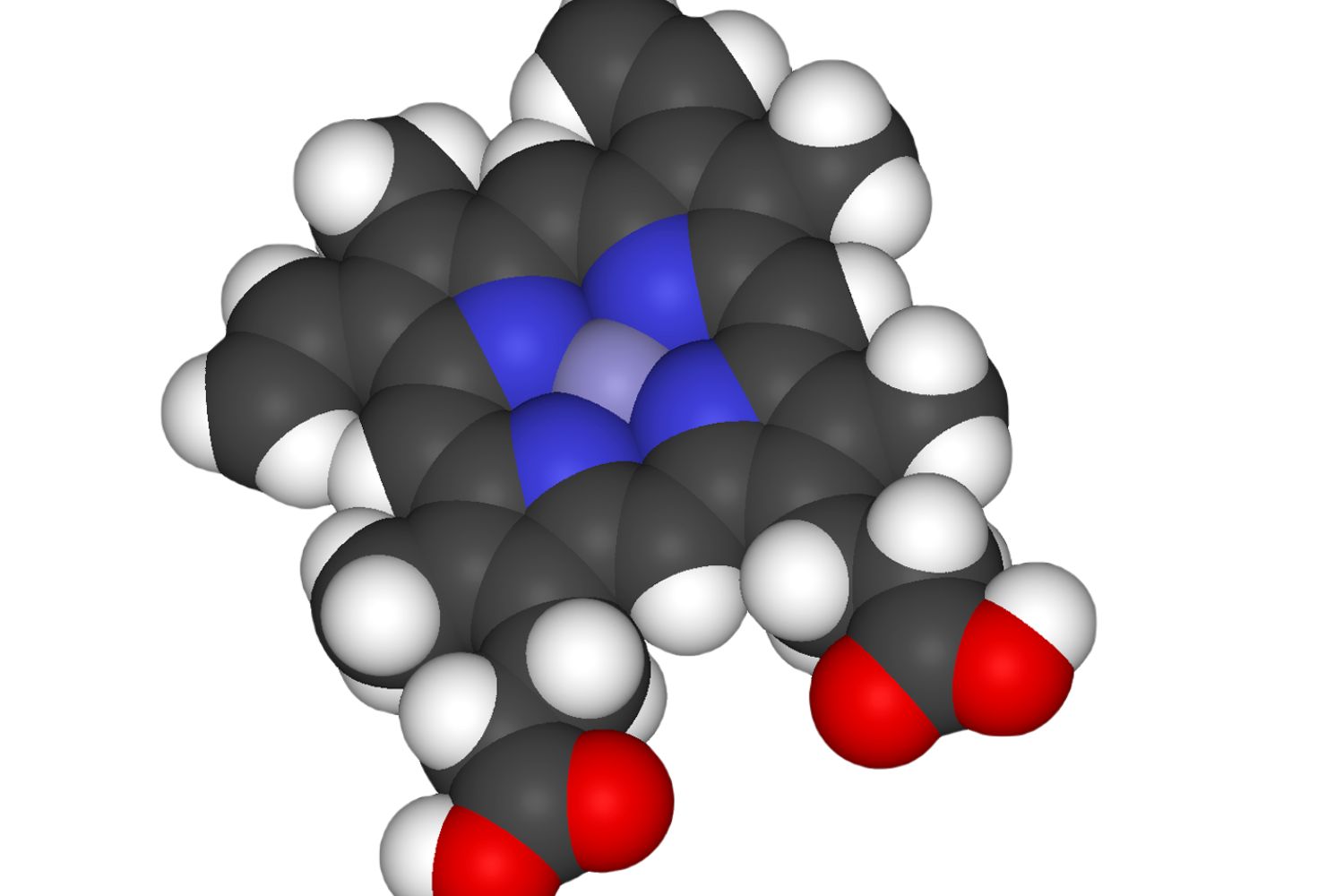
Hemoproteins are fascinating molecules that play crucial roles in various biological processes. These proteins contain a heme group, which is an iron-containing compound that allows them to perform essential functions like oxygen transport, electron transfer, and catalysis. Hemoglobin, for instance, is a well-known hemoprotein responsible for carrying oxygen in the blood. But did you know that hemoproteins are also involved in detoxifying harmful substances in the liver? They are found in almost all living organisms, from bacteria to humans. Understanding hemoproteins can help us grasp how life sustains itself at a molecular level. Ready to dive into 40 intriguing facts about these vital proteins? Let's get started!
Key Takeaways:
- Hemoproteins, like hemoglobin and myoglobin, are essential for oxygen transport, enzyme activity, and even immune response. They play diverse roles in our bodies and have potential applications in medicine and research.
- The study of hemoproteins is not only crucial for understanding life on Earth but also holds exciting possibilities for renewable energy, environmental cleanup, and even space exploration.
What are Hemoproteins?
Hemoproteins are proteins that contain a heme group, which is an iron-containing compound. These proteins play crucial roles in various biological processes. Let's dive into some fascinating facts about hemoproteins.
-
Hemoproteins are essential for oxygen transport in the body. Hemoglobin, a type of hemoprotein, carries oxygen from the lungs to tissues.
-
Myoglobin, another hemoprotein, stores oxygen in muscle cells, providing a reserve during intense physical activity.
-
Hemoproteins are involved in electron transfer processes. Cytochromes, a class of hemoproteins, play a key role in cellular respiration.
-
The heme group in hemoproteins can bind to gases like oxygen, carbon monoxide, and nitric oxide, affecting their function.
-
Hemoproteins are found in almost all living organisms, from bacteria to humans.
Functions of Hemoproteins
Hemoproteins are not just limited to oxygen transport. They have a variety of functions that are vital for life.
-
Hemoproteins act as enzymes. Cytochrome P450 enzymes, for example, are involved in drug metabolism and the synthesis of cholesterol.
-
They participate in the detoxification of harmful substances. Catalase, a hemoprotein, breaks down hydrogen peroxide into water and oxygen.
-
Hemoproteins are involved in the synthesis of hormones. Cytochrome P450 enzymes help produce steroid hormones like cortisol and aldosterone.
-
They play a role in the immune response. Nitric oxide synthase, a hemoprotein, produces nitric oxide, which helps kill pathogens.
-
Hemoproteins are involved in photosynthesis. In plants, cytochromes are part of the electron transport chain in chloroplasts.
Structure of Hemoproteins
The structure of hemoproteins is fascinating and complex, contributing to their diverse functions.
-
Hemoproteins have a heme group, which consists of an iron ion held in a heterocyclic ring called porphyrin.
-
The iron ion in the heme group can exist in different oxidation states, allowing hemoproteins to participate in redox reactions.
-
Hemoproteins have a globular structure, which helps them interact with other molecules.
-
The heme group is usually buried within the protein structure, protecting it from oxidation.
-
Hemoproteins can form complexes with other proteins, enhancing their functionality.
Hemoproteins in Medicine
Hemoproteins have significant medical applications, from diagnostics to treatment.
-
Hemoglobin levels are measured to diagnose anemia, a condition characterized by low red blood cell count.
-
Myoglobin levels are checked to assess muscle damage, such as in heart attacks.
-
Hemoproteins are used in drug development. Cytochrome P450 enzymes are studied to understand drug interactions and metabolism.
-
Hemoproteins are targets for certain drugs. For example, some antibiotics inhibit bacterial cytochromes, killing the bacteria.
-
Hemoproteins are involved in photodynamic therapy, a treatment for cancer that uses light-activated drugs.
Interesting Facts about Hemoproteins
Here are some lesser-known but intriguing facts about hemoproteins.
-
Hemoproteins can change color based on their oxidation state. For example, oxygenated hemoglobin is bright red, while deoxygenated hemoglobin is dark red.
-
Some hemoproteins can bind to multiple heme groups, increasing their functionality.
-
Hemoproteins can be found in unusual places. For example, hemoglobin has been discovered in certain plants and fungi.
-
Hemoproteins can be engineered for industrial applications, such as biocatalysts in chemical reactions.
-
Hemoproteins can be used as biosensors to detect gases like oxygen and carbon monoxide.
Evolution of Hemoproteins
The evolution of hemoproteins is a testament to their importance in life.
-
Hemoproteins have evolved to perform specialized functions in different organisms.
-
The heme group structure has remained largely unchanged throughout evolution, highlighting its efficiency.
-
Hemoproteins have diversified through gene duplication and mutation, leading to new functions.
-
Some hemoproteins have evolved to work in extreme environments, such as deep-sea vents and hot springs.
-
The study of hemoproteins in different organisms helps scientists understand evolutionary processes.
Hemoproteins in Food
Hemoproteins are also present in the food we eat, contributing to its nutritional value.
-
Red meat is rich in hemoproteins like myoglobin, which gives it its color.
-
Hemoproteins in fish, such as hemoglobin and myoglobin, contribute to their nutritional content.
-
Some plant-based foods contain hemoproteins, although in smaller amounts compared to animal products.
-
Cooking can affect the structure and function of hemoproteins, influencing the taste and texture of food.
-
Hemoproteins are a source of dietary iron, which is essential for various bodily functions.
Future Research on Hemoproteins
The study of hemoproteins continues to be a vibrant field of research with many exciting possibilities.
-
Researchers are exploring the use of hemoproteins in renewable energy, such as biofuel production.
-
Hemoproteins are being studied for their potential in bioremediation, using living organisms to clean up environmental pollutants.
-
Advances in genetic engineering may allow the creation of custom hemoproteins with specific functions.
-
Understanding hemoproteins better could lead to new treatments for diseases like cancer and neurodegenerative disorders.
-
The study of hemoproteins in space could provide insights into how life adapts to extreme conditions.
The Final Word on Hemoproteins
Hemoproteins are fascinating molecules playing crucial roles in various biological processes. From oxygen transport in hemoglobin to electron transfer in cytochromes, these proteins are vital for life. They contain heme groups, which are iron-containing compounds that allow them to perform their functions effectively. Understanding hemoproteins can lead to advancements in medicine, such as developing treatments for blood disorders or creating artificial blood substitutes. These proteins also have industrial applications, including biosensors and biocatalysts. As research continues, the potential uses for hemoproteins will likely expand, offering new solutions to scientific and medical challenges. So, whether you're a student, a researcher, or just curious, knowing about hemoproteins can provide valuable insights into the workings of life and technology. Keep exploring, and who knows what other amazing facts you'll uncover about these incredible molecules!
Frequently Asked Questions
Was this page helpful?
Our commitment to delivering trustworthy and engaging content is at the heart of what we do. Each fact on our site is contributed by real users like you, bringing a wealth of diverse insights and information. To ensure the highest standards of accuracy and reliability, our dedicated editors meticulously review each submission. This process guarantees that the facts we share are not only fascinating but also credible. Trust in our commitment to quality and authenticity as you explore and learn with us.


